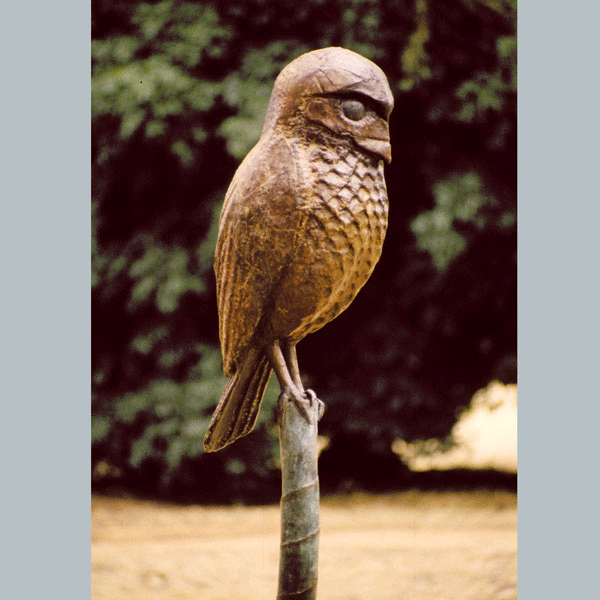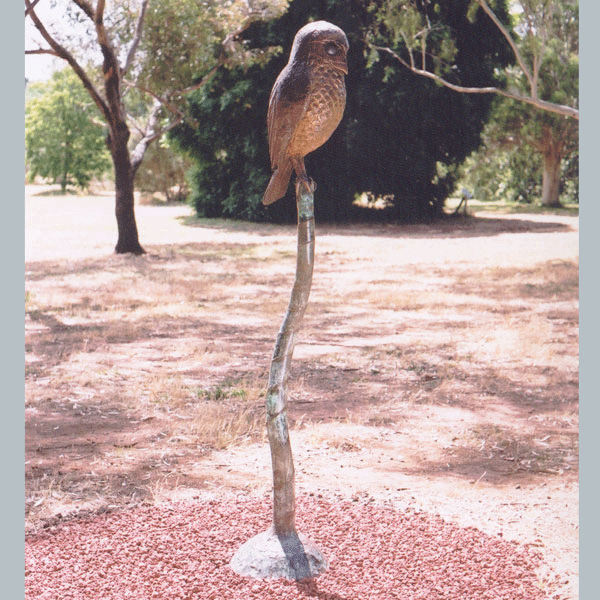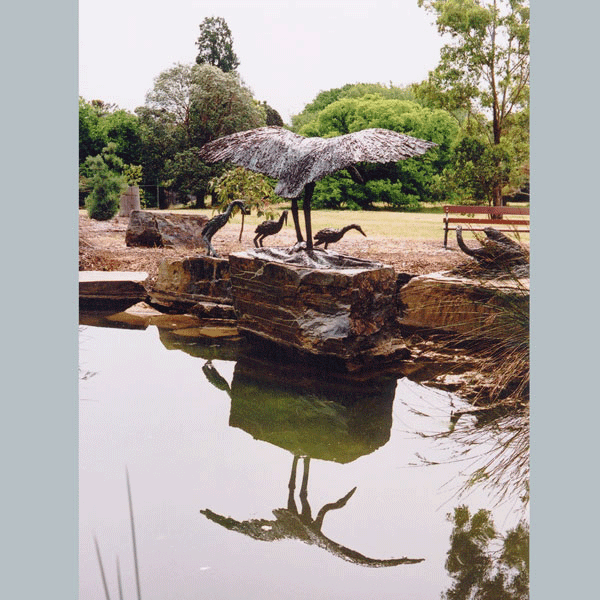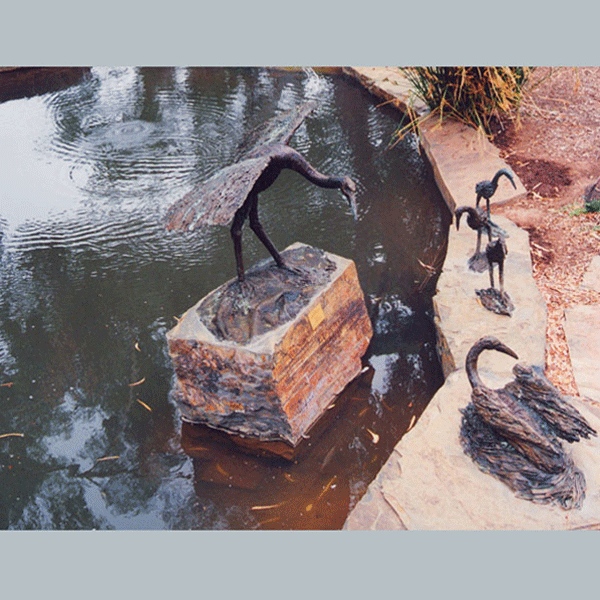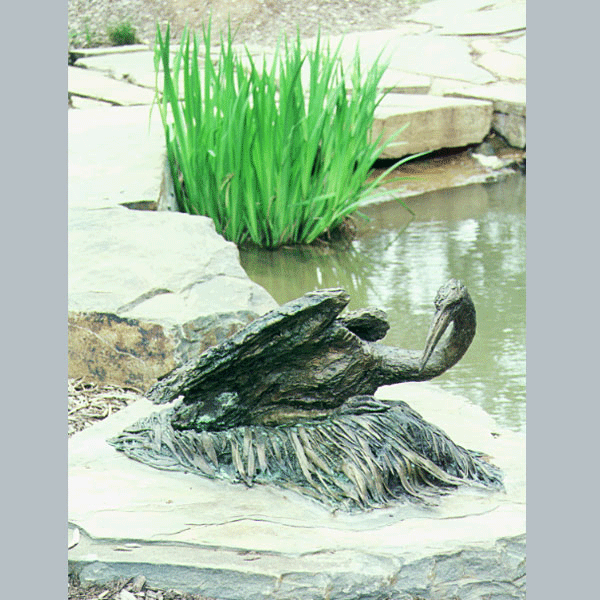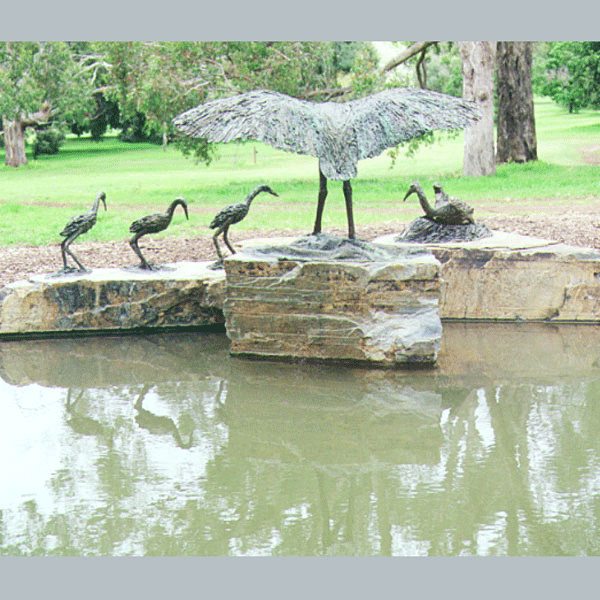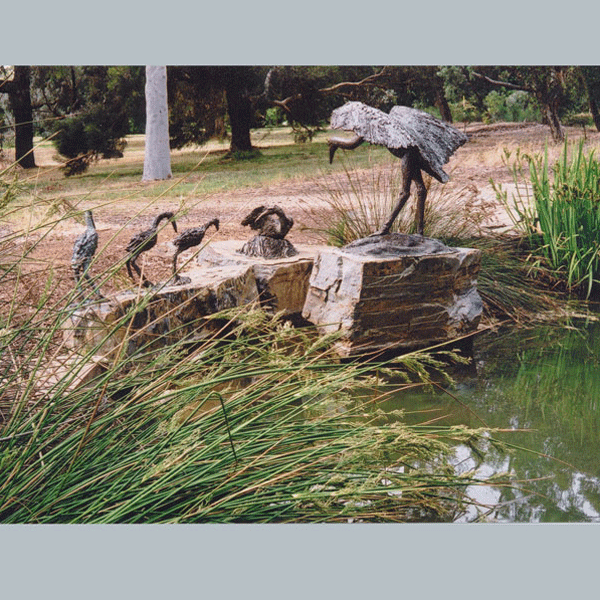"Waterbirds" Meliesa Judge
"The Owlpole" Will Kuiper
University of Adelaide
The Waterbirds were commissioned for the University of Adelaide in 1997, installed in 1998. The Heard family approached us with a very specific idea for the sculpture, which was to be donated to the University of Adelaide and dedicated as a memorial to Graham Heard.
The resolution of the design concept took time. The brief was to maintain the loose style of modelling the forms that the clients were already familiar with in my work. The birds were to be generic rather than species specific, water dwelling. The size of the flock and the relationship of the birds to each other, was defined by the clients. The site had been surveyed and agreed upon before modelling began. We worked through maquettes and small bronze casts of the main bird. I remodelled the main bird several times to capture the sense of lift beneath his wings, the snake in his neck. The nest took several attempts to resolve. The finished nest form is a wonderful tangle of twigs and leaves in bronze.
The sculpture is tucked into a peaceful hillside, the slope of the park opening out into a distant view. The Birds are perched on water’s edge. A well-placed bench, on the other side of the pond, invites walkers to rest a while. The site is a botanic park and a protected bird sanctuary. The sculptures are often surrounded by wild wood ducks. A few white ibis frequent the park. At dawn and dusk the area is alive with birdlife.
Tawny Frogmouths nest in this area of the bird sanctuary. The sculpture is set in a grove of trees known to be a nesting ground for these nocturnal birds. The paths that curve along the watercourse, reveal the sculpture from various angles, framed against the water in the lake, or standing out against the dark foliage of the trees.
The Tawny Frogmouth is a nocturnal predator and an Australian native. Often mistaken for an Owl the Tawny Frogmouth is distinguished by its wide, flat beak. The Tawny Frogmouth has a number of outstanding physical characteristics: large forward facing eyes for binocular vision and low light sighting, wide skull, asymmetrical ear openings to help pinpoint the source of sound. Softened flight feathers make silent swooping possible. Beneath the roundness of it’s feathers there is an exceptionally long and flexible neck, enabling it to turn it’s head a full 180 degrees.
The Frogmouth’s defence strategy as it sleeps through the day, is its perfect camouflage. Soft mottled grey like the trunks of the Eucalyptus trees it nests in. Before Europeans settled in Australia, the Tawny Frogmouth’s only predators were hawks or eagles. Its defence against danger is to sit very still, blending into the tree so well that it is very difficult to spot them. With the introduction of the domestic cat to Australia, the Tawny Frogmouth population have been decimated. Cats are now feral throughout the country and are directly responsible for the extinction of many small ground and tree dwelling native creatures.
The sculpture itself has a stylised set of parts and a lyrical texture. From the fine stippled surface of its folded layered wings to the chain-mail effect of it’s chest feathers and it’s visor-guard like face. The sculpture is than life size so that the bigger volume might imbue its contemplative nature. With the addition of the “pod pole” as a perch, the intention was to encapsulate the sense of a surveying sentinel and nocturnal sensor, as we have come to associate Owls throughout natural history and folklore.
The bronze rendition was taken from the copper original, retaining the texture and tooling marks of the copper in the cast bronze.
